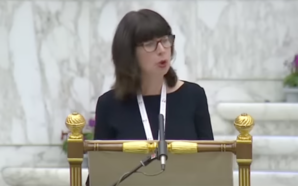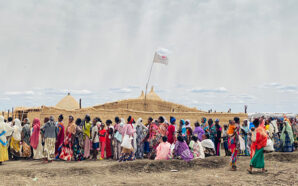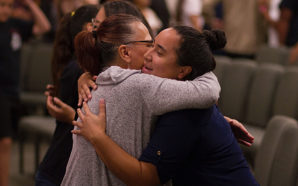As a Doctor of the Church, St. Thérèse of Lisieux is surely the privileged expression of the Little Way for our times. Yet, there is another Little Way, that of the twentieth-century Dutch Jew and Holocaust victim, Etty Hillesum. In the final Ash Wednesday address of his pontificate, Pope Benedict XVI challenged his audience to notice God’s grace at work in “social and cultural milieus that seem engulfed in secularisation.” Highlighting the life of Etty Hillesum, Benedict remarked, “In her disrupted, restless life she found God in the very midst of the great tragedy of the twentieth century: the Shoah.” Indeed, in our secular age, he added, “we may not be surprised to discover modern-day mystics and unconventional instances of contemporary sanctity that fall outside the framework of traditional hagiography.”
Born in the Netherlands in 1914, Etty Hillesum—an assimilated Dutch Jew—was the oldest of four children in a well-established middle-class family. Though they were part of the ethnic Jewish community, they did not participate regularly in Jewish religious practices. Etty was reared in a house permeated by both intellectual and artistic genius and profound mental illness.[1] Her vivacious demeanour, her erotic pursuits and struggles, and her spiritual pluralism make her relatable to many sojourners in the secular age.
When she wrote her journals—later published as An Interrupted Life—Etty was living in Amsterdam where she worked as a Russian tutor. Her life in Amsterdam revolved around two communities: the household of Han Wegerif, where she lived, and a group of women devoted to the Jungian-influenced psychologist Julius Spier and his practice of a kind of psychotherapy. For a time, she had ongoing intimate relationships with both Wegerif and Spier, the latter being the more captivating and transformative relationship in her life. In fact, Etty considered herself “accomplished in bed,” just about “seasoned enough” to be “counted among the better lovers.”[2] Her journals reveal, however, a slow pruning of her urgent eros into something closer to selfless agape, as she navigated the perils of coming of age in Nazi Europe. Richard Galliardetz rightly notes that even though Etty embraced a variety of Christian writings, it is “misleading to characterize her as a crypto-Christian, as many Christian admirers of her thought have been inclined to do.”[3] She drew on a variety of religious, philosophical, and poetic sources, above all Rainer Maria Rilke.
This point granted, it still seems plausible for a theologian to discern vestiges of Trinitarian love at work in a broken, interrupted, unfinished life such as Etty Hillesum’s, presuming from the perspective of a Catholic theologian that the Trinitarian God of love continually breaks into history. It is fitting to discern in compelling examples of religious experience the possibility of (1) sanctifying grace—the consoling, complacent love that offers true rest, and (2) the habit of charity—the kind of apostolic sanctity that habitually orients one to enact God’s love in the world.[4] Human beings are, after all, continually being stirred by the Spirit in their ongoing existential and religious questioning.[5]
To continue reading this essay, click here.
Randall S. Rosenberg is Dean of the College of Philosophy and Letters and associate professor of systematic theology at Saint Louis University. He is the author of The Givenness of Desire: Concrete Subjectivity and the Natural Desire to See God.
With thanks to Church Life Journal, A Journal of the McGrath Institute for Church Life at the University of Notre Dame, Notre Dame, Indiana, and Randall S. Rosenberg, where this article originally appeared.
[1] Annemarie S. Kidder, introduction to Etty Hillesum: Essential Writings (Maryknoll: Orbis: 2009), 9.
[2] Etty Hillesum, An Interrupted Life: The Diaries, 1941–1943 and Letters from Westerbork (New York: Holt, 1996), 3.
[3] Richard R. Gaillardetz, “Sexual Vulnerability and a Spirituality of Suffering,” Pacifica 22 (February 2009): 78.
[4] In chapter 7 of my book The Givenness of Desire: Concrete Subjectivity and the Natural Desire to See God (Toronto: Toronto, 2017), I draw on the work of Robert M. Doran, The Trinity in History: A Theology of the Divine Missions, vol. 1: Missions and Processions. (Toronto: Toronto, 2012) and Neil Ormerod, “The Metaphysics of Holiness: Created Participation in Divine Nature,” Irish Theological Quarterly 79.1 (2014): 68–82 to develop a systematic theology of the saints. In that chapter, I develop a longer conversation with St. Thérèse of Lisieux and Etty Hillesum.
[5] Pope John Paull II, Redemptoris Missio, §28.








